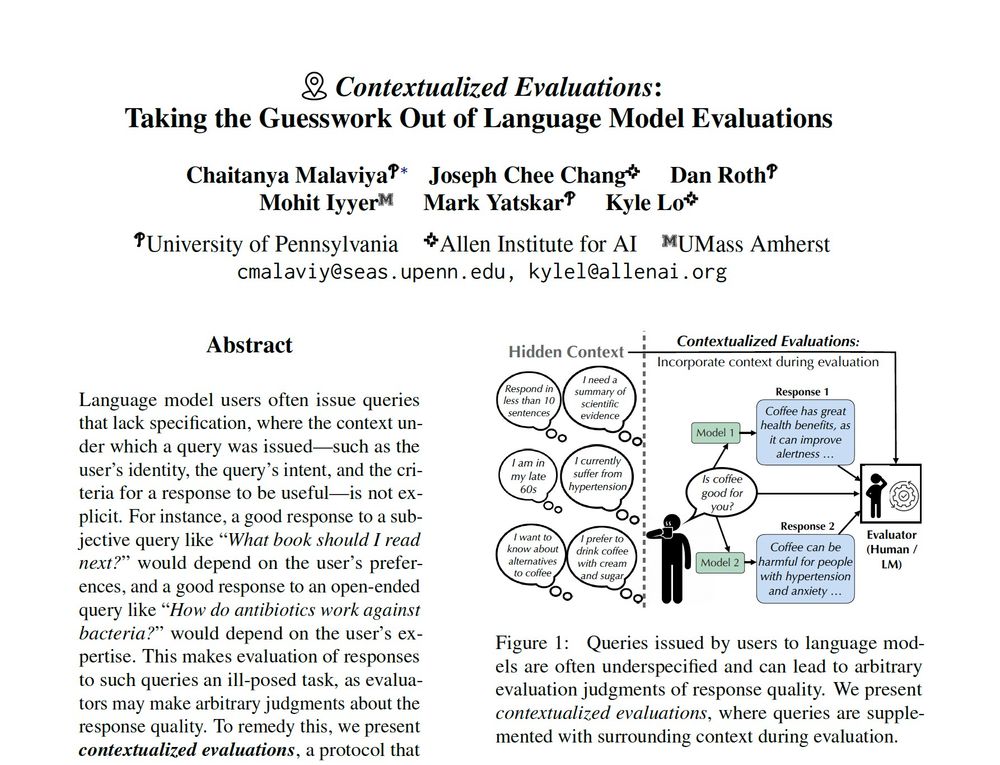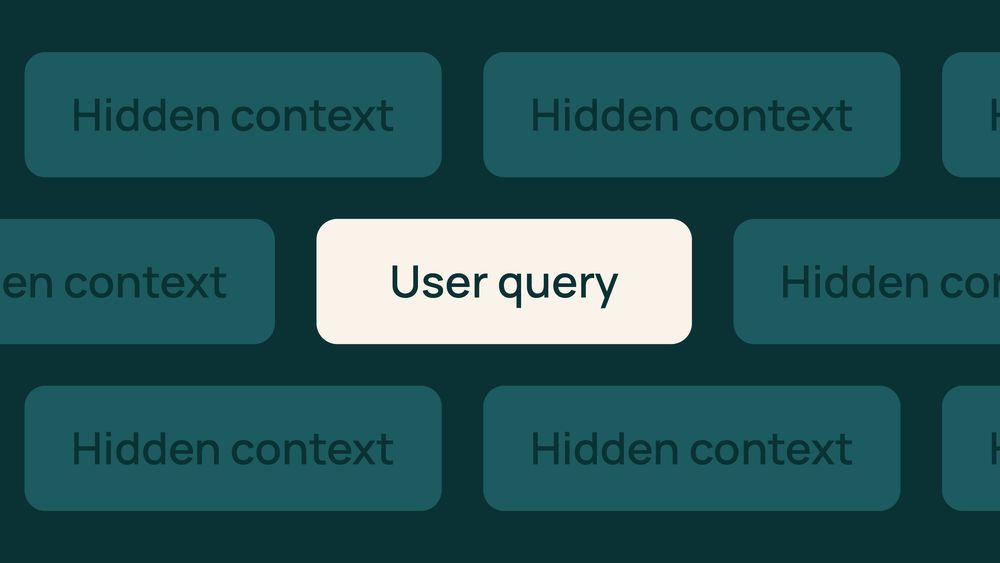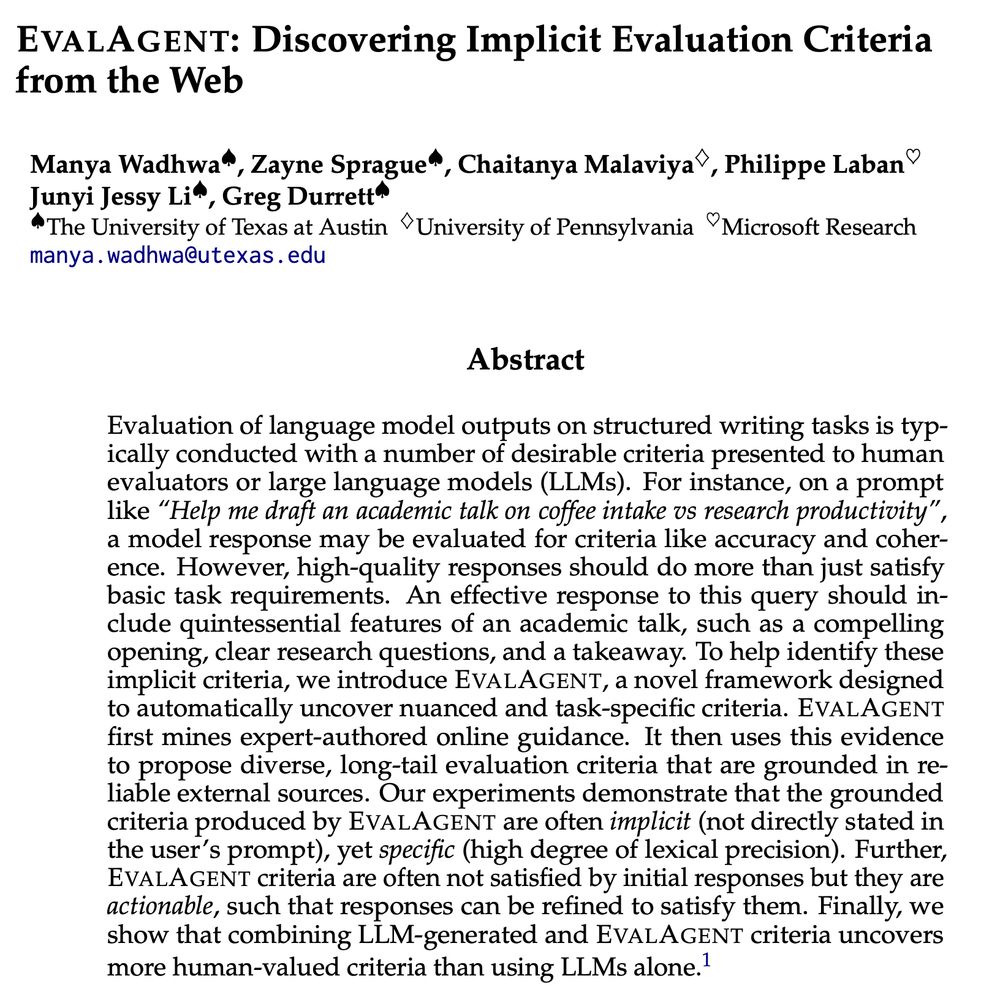Chaitanya Malaviya
@cmalaviya.bsky.social
250 followers
94 following
20 posts
Senior research scientist @ GoogleDeepMind | benchmarking and evaluation | prev @upenn.edu @ai2.bsky.social, and @ltiatcmu.bsky.social
chaitanyamalaviya.github.io
Posts
Media
Videos
Starter Packs
Pinned
Reposted by Chaitanya Malaviya
Chaitanya Malaviya
@cmalaviya.bsky.social
· Jul 30
Reposted by Chaitanya Malaviya
Reposted by Chaitanya Malaviya
Chaitanya Malaviya
@cmalaviya.bsky.social
· Nov 13

Contextualized Evaluations: Taking the Guesswork Out of Language Model Evaluations
Language model users often issue queries that lack specification, where the context under which a query was issued -- such as the user's identity, the query's intent, and the criteria for a response t...
arxiv.org



















